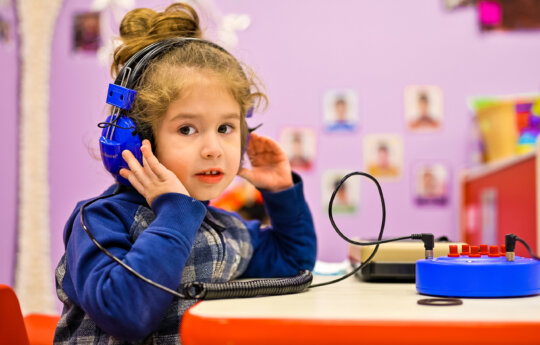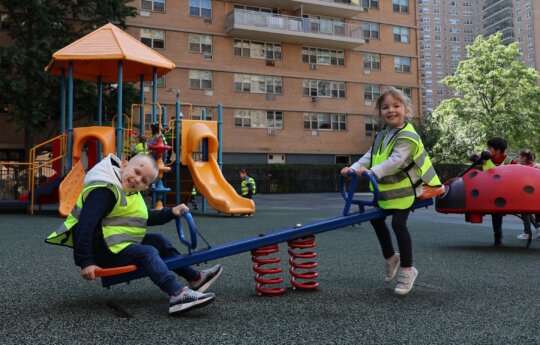
As we navigate the complexities of modern parenthood, the question of how to balance the kid’s screen time with active play emerges as a common thread of concern. It’s a balancing act that many of us struggle with: ensuring our kids enjoy the benefits of technology without missing out on the joys and developmental benefits of physical play outdoors. As we have already touched on the topic of parenting in a digital age, this piece explores practical strategies for finding that sweet spot between digital engagement and hands-on fun, underscoring why it’s essential for our children’s well-rounded growth.
Understanding the Balance: Screen Time vs. Playtime
The debate between screen time vs. playtime is not about eliminating technology entirely but finding a harmonious balance that benefits children’s growth. Healthy screen time limits are essential, as too much screen exposure can impact children negatively, leading to reduced physical activity and social interaction. Screen time guidelines for children recommend no more than one hour per day for those aged 2-5 years and consistent limits for older children and adolescents.
Strategies for Balancing Screen Time
- Embrace Routine: Establish a consistent daily schedule that allocates specific times for screen use and physical activities. This structure helps children understand expectations and adjusts their habits accordingly.
- Be Selectively Digital: Opt for educational content that is engaging and developmentally appropriate. Many platforms offer content that promotes learning through play, effectively blending screen time with educational opportunities.
- Tech-free Zones: Designate areas in your home as screen-free zones to encourage physical play and family interaction. This can help shift focus from screens to more active and social forms of entertainment.
- Outdoor Adventures: Regularly engage in outdoor activities that promote physical health and exploration. Whether it’s a family hike, a bike ride, or a simple game of catch, these activities offer a necessary break from digital screens and stimulate physical development.
- Creative Play: Encourage activities that spark creativity, such as arts and crafts, building blocks, and imaginative play. These activities not only provide a screen-free entertainment option but also support cognitive and motor skills development.
- Model Behavior: Children often mirror adult behavior, so it’s crucial for parents to exhibit a balanced approach to their own screen use. Demonstrating mindful screen habits and prioritizing physical activity can set a positive example.
- Digital Detox: Periodically, implement digital detox days where the entire family disconnects from electronic devices to enjoy screen-free activities together. This can strengthen family bonds and provide a refreshing break from digital stimuli.
Tools and Resources
- Best Apps for Managing Screen Time: Apps like Qustodio and Screen Time offer features for setting time limits and monitoring usage, helping parents control how long and what their children access online.
- Gadgets to Encourage Physical Activity: Devices like the Fitbit Ace 2 or Garmin Vivofit Jr. 2 encourage kids to move more by tracking their physical activity in a fun and interactive way.
- Technology for Active Play: Use technology to your advantage by choosing games and apps that require physical movement, such as dance games or sports simulation games.
- Digital Parenting Resources: Websites like Common Sense Media provide valuable insights into balancing screen time, suggesting age-appropriate apps, games, and content for children.
Daycare: Encouraging Active Play Over Screen Time
Daycares play a pivotal role in fostering an environment that encourages children to spend less time in front of gadgets, thereby promoting a healthy balance between physical activity and screen time. By integrating structured schedules filled with a variety of interactive, educational, and play-based activities, daycares offer children numerous opportunities to engage in creative play, social interaction, and learning experiences that do not rely on screens.
Activities such as storytime, arts and crafts, outdoor play, and group games not only stimulate children’s cognitive and physical development but also nurture their social skills and imagination. Furthermore, daycare settings emphasize the importance of hands-on learning and exploration, providing a rich array of sensory experiences that gadgets cannot replicate. Through these practices, daycares effectively reduce children’s screen time, guiding them towards more active and engaging alternatives that contribute to their overall well-being and development.
Conclusion
Finding the right balance between screen time and active play is all about making smart choices that lead to a healthier lifestyle for your kids. By establishing clear rules, encouraging them to move more, and being thoughtful about the digital content they consume, you can help your children enjoy the best of both worlds. It’s important to remember that the aim here is to blend technology into our kids’ lives in ways that positively contribute to their growth and happiness.
Unlock Your Child’s Potential at Little Scholars Daycare! Are you ready to give your child the head start they deserve? At Little Scholars, we blend fun, education, and creativity to foster the next generation of thinkers, leaders, and innovators. Don’t let your little one miss out on the adventure of a lifetime. Enroll today and watch them grow, learn, and thrive in an environment that’s as passionate about their future as you are. Click here to learn more and join the Little Scholars family!
Related Insights
Parenting in a Digital Age: Navigating Challenges and Opportunities




